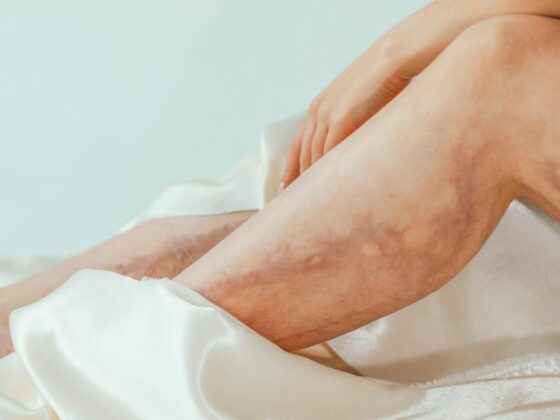Addiction was often treated as a standalone issue for decades, a behavioral problem of poor choices and lack of willpower. Individuals were sent to rehab to get “clean,” but without addressing the underlying psychological turmoil fueling their substance use, the cycle of relapse was often inevitable.
Today, a more profound and effective approach has become the gold standard in compassionate care: dual diagnosis treatment. Learn how this integrated method seeks to heal the whole person, addressing the root causes of addiction.
Key Takeaways
- Treat co-occurring disorders together to break the cycle of self-medication and address the root causes of addiction.
- Implement integrated, concurrent care where a unified team provides coordinated therapy for both mental health and substance use.
- Utilize specialized, evidence-based therapies to build emotional regulation and distress tolerance skills.
- Build a sustainable foundation for recovery by creating a balanced lifestyle and healthy relationships that support long-term well-being.
What is Dual Diagnosis?
Dual diagnosis, also called co-occurring disorders, pertains to a term used when a person experiences a substance use disorder (SUD) and a mental health condition simultaneously. This is not a mere coincidence; the two conditions are deeply intertwined, each influencing and exacerbating the other. Common psychological conditions that co-occur with addiction include:
- Major depression and persistent depressive disorder
- Anxiety disorders (e.g. generalized anxiety and panic disorder)
- Bipolar disorder
- Attention-deficit hyperactivity disorder (ADHD)
- Post-traumatic stress disorder (PTSD)
- Personality disorders
The relationship between the two is complex. For some, mental health symptoms emerge first, and individuals may turn to drugs or alcohol as a form of self-medication to numb emotional pain or quiet psychological distress.
The chronic use of substances can alter brain chemistry so significantly that it triggers the onset of a latent mental illness. Dual diagnosis treatment addresses both issues, which is the core approach at trusted residential care facilities like Jackson House Addiction Treatment & Recovery Centers. Their programs provide cohesive care to ensure lasting healing.
Understanding the Root Causes of Addiction
Addiction is best understood as a perfect storm where multiple vulnerabilities converge, leading to compulsive substance use or harmful behavior despite the consequences. The primary root causes are:
1. Biological factors
Genetics can account for 40-60% of a person’s vulnerability, influencing brain chemistry and impulse control. All addictive substances and behaviors hijack the brain’s reward system, flooding it with dopamine. This causes the brain to adapt, leading to tolerance (needing more for the same effect) and impairing the prefrontal cortex, which governs judgment and decision-making.
2. Psychological factors
Underlying mental health disorders are major drivers, as individuals often use substances to self-medicate. Early life trauma significantly rewire the brain’s stress response, increasing vulnerability. Personality traits like high impulsivity or sensation-seeking also elevate risk.
3. Social and environmental factors
Social environment, including peer pressure and family normalization of use, is a powerful influence. Economic adversity, poverty, and lack of opportunity create chronic stress.
Crucially, profound social isolation and loneliness are recognized as key drivers, as addiction thrives in the absence of healthy community bonds. Early exposure to substances, especially during adolescence, dramatically increases the risk.
The interconnected nature of these causes is critically evident in dual diagnosis, the frequent co-occurrence of addiction and another mental health disorder. Here, the relationship is cyclical: psychological trauma or illness drives self-medication with substances, while the neurochemical changes of addiction worsen the underlying mental health condition.
The Vicious Cycle of Self-Medication
One of the most common pathways to a dual diagnosis is self-medication. Imagine living with the relentless, heavy fog of depression or the paralyzing grip of anxiety. In a desperate attempt to feel “normal” or simply to feel less, a person might discover that alcohol temporarily lifts their mood or that stimulants alleviate the fatigue of their depression. This creates a powerful, albeit dangerous, reinforcement loop.
The substance provides temporary relief, which reinforces its use. However, as tolerance builds, more of the substance is needed to achieve the same effect, accelerating the path to addiction. Furthermore, the long-term use of these substances often worsens the original mental health symptoms once the initial effects wear off, leading to a devastating downward spiral.
Facilities that specialize in this level of care are critical because they are equipped to untangle this complex web. They understand that treating the addiction without providing therapeutic tools for the underlying depression or anxiety is a temporary fix at best.
Integrated Treatment for Dual Diagnosis Care
The defining feature of effective dual diagnosis treatment is integration. This is more than a buzzword; it’s a fundamental philosophical and clinical shift away from a fragmented model of care.
Historically, individuals were often told they had to be “stable” from their mental illness before treating their addiction, or vice-versa, a nearly impossible task when the two conditions are so deeply enmeshed. Integrated treatment eliminates this counterproductive barrier.
Instead of a patient being shuttled between disconnected facilities and providers, all care is delivered by a cohesive team of professionals in a unified setting, where every intervention is designed to address both conditions concurrently. This integrated approach is a multi-faceted process, typically encompassing the following key elements:
1. Comprehensive assessment
Before any treatment can begin, a thorough and nuanced assessment is critical. This is not a simple screening but a deep-dive evaluation conducted by psychiatrists, psychologists, and licensed clinicians.
The goal is to untangle the complex web of symptoms to diagnose all present substance use and mental health disorders accurately. For example, is the individual’s depression a primary condition, or is it a substance-induced depressive disorder? Are mood swings a result of the cyclical intoxication and withdrawal from stimulants?
This diagnostic clarity is the essential first step, as an incorrect or incomplete diagnosis can lead an entire treatment plan astray. It involves detailed interviews, standardized assessment tools, medical evaluations, and often collaboration with family members to get a complete historical picture.
2. Coordinated treatment planning
Following the assessment, the clinical team develops a single, unified treatment plan. This is the master blueprint for recovery, and it explicitly outlines goals and therapeutic strategies for the addiction and the mental health disorder.
A goal might be, “The client will learn to use DBT distress tolerance skills to manage PTSD-related anxiety cravings without resorting to substance use.” This plan ensures that every professional on the team, from the psychiatrist to the therapist to the case manager, is working in concert toward the same objectives.
There is no separate “addiction track” and “mental health track”. There is one path forward, personalized to the individual’s unique needs and root causes.
3. Combined therapies
Integrated treatment relies on evidence-based therapies that are uniquely effective for co-occurring disorders. Modalities like cognitive behavioral therapy (CBT) help individuals identify the interconnected distorted thought patterns that fuel both conditions, such as “I need a drink to be social” (addiction) and “No one will like me if I’m anxious” (social anxiety).
Dialectical behavior therapy (DBT) is particularly powerful, teaching crucial skills in mindfulness, emotional regulation, distress tolerance, and interpersonal effectiveness. These skills are directly applicable to managing both the urges of addiction and the intense emotional swings of conditions like borderline personality disorder or severe depression.
The therapy doesn’t just happen in isolated sessions. It’s woven throughout the treatment day, making the connection between thoughts, feelings, and behaviors explicit and manageable.
4. Pharmacotherapy
Medication, when carefully prescribed and monitored, is a cornerstone of integrated care. For many, it provides the necessary neurochemical stability to engage effectively in therapy. A psychiatrist on the integrated team might prescribe:
- Antidepressants or mood stabilizers to address the underlying biochemical components of depression or bipolar disorder.
- Anti-anxiety medications (used cautiously) to manage debilitating anxiety.
- Anti-craving medications (like naltrexone or acamprosate for alcohol) or medication-assisted treatment (like buprenorphine for opioid use) to reduce the physiological pull of addiction.
The key is that medication management is fully coordinated with the therapeutic work, ensuring that the medication supports the psychological goals and vice-versa.
5. Peer support
In group therapy sessions specifically for those with co-occurring disorders, individuals find a community that “gets it.” They can share their struggles with managing both depression and alcoholism, or PTSD and a stimulant addiction, without fear of judgment or needing to explain which symptom belongs to which disorder.
Shared experience drastically reduces the shame and stigma that often accompany both mental illness and addiction. Participants learn from each other, hold each other accountable, and build a network of understanding that proves recovery is not only possible but is being achieved by others walking the same path.

The Critical Role of Trauma-Informed Care
A history of trauma, whether from childhood, combat, assault, or loss, is a significant predictor for both mental illness and substance use disorders. Trauma changes the brain’s wiring, impacting its stress response, emotional regulation, and sense of safety.
Dual diagnosis programs that are trauma-informed recognize the pervasive impact of trauma and create a treatment environment that promotes safety, trust, and empowerment. Eye movement desensitization and reprocessing (EMDR), trauma-focused CBT, and other treatment modalities are integrated to help individuals process and integrate traumatic memories without being re-traumatized, which is essential for lasting recovery.
Building a Sustainable Foundation for Recovery
Addressing the root causes through dual diagnosis treatment does more than just achieve initial sobriety; it builds a resilient foundation for a sustainable future. By learning to manage their mental health with healthy coping mechanisms, individuals no longer need to rely on substances to get through the day. They develop skills in:
1. Emotional regulation and distress tolerance
This skill is the process of learning to manage difficult emotions without being overwhelmed. Substances often serve to numb or escape feelings like pain and anxiety.
In recovery, individuals develop a new toolkit, using mindfulness and self-soothing practices to sit with discomfort. This builds the capacity to handle life’s inevitable challenges without resorting to substance use, dismantling a primary relapse trigger.
2. Identifying and challenging negative thought patterns
This cognitive work focuses on the distorted thoughts that fuel addiction, such as catastrophizing or self-criticism. These patterns create a sense of hopelessness that can justify relapse.
Individuals learn to intercept these thoughts, evaluate their validity, and reframe them into a balanced perspective. Changing this internal narrative removes a key trigger and builds a resilient mindset.
3. Building healthy relationships and setting boundaries
Recovery requires a conscious restructuring of one’s social world. This means cultivating a supportive network that encourages sobriety and distancing from enabling or toxic relationships.
The crucial companion to this is setting firm boundaries or the ability to say “no” to situations that threaten well-being. This creates a safe environment of connection and accountability essential for long-term growth.
4. Creating a balanced lifestyle that supports their well-being
Sustainable recovery fills the void left by substances with a proactive, health-oriented life. This holistic approach includes physical self-care like sleep and exercise, which stabilize mood, and establishing a routine with purposeful work or hobbies. By building a life that is inherently rewarding and manageable, the need for substances is eliminated, making recovery about thriving, not just abstaining.
This comprehensive healing significantly reduces the risk of relapse because the fundamental driver of the addiction has been addressed. Recovery becomes about more than abstinence. It becomes about building a fulfilling and manageable life.
Why a Specialized Program is Non-Negotiable
Attempting to treat co-occurring disorders in a standard addiction rehab program is an inherently flawed approach that often leads to ineffective treatment and relapse. Indeed, a specialized dual diagnosis program is an absolute necessity for true, sustainable recovery.
1. Breaks the relapse cycle
Untreated mental health symptoms like anxiety or depression become overwhelming triggers in early recovery, making a return to substance use as a coping mechanism highly likely.
2. Treats the root cause
Standard rehab focuses solely on the addiction (the symptom), leaving the underlying mental health disorder that drives self-medication unaddressed and ready to resurface.
3. Provides truly integrated care
These programs have the clinical expertise to accurately diagnose both conditions and provide concurrent, coordinated treatment, rather than offering two separate, disconnected plans.
4. Employs specialized therapies
Dual diagnosis programs utilize evidence-based therapies specifically designed for this complexity, such as DBT for emotional regulation, which are not typically a core component of standard addiction treatment.
The Bottom Line
Addiction is most often a symptom of a deeper, untreated psychological wound. Dual diagnosis treatment represents a fundamental shift from simply managing addiction to truly healing the individual. This approach digs down to the root causes, and provides the tools for holistic healing. For anyone struggling with co-occurring disorders, seeking a specialized, integrated dual diagnosis program is the most direct path to reclaiming their life from the ground up.
Image Credit: Adobe Stock & Adobe Stock









